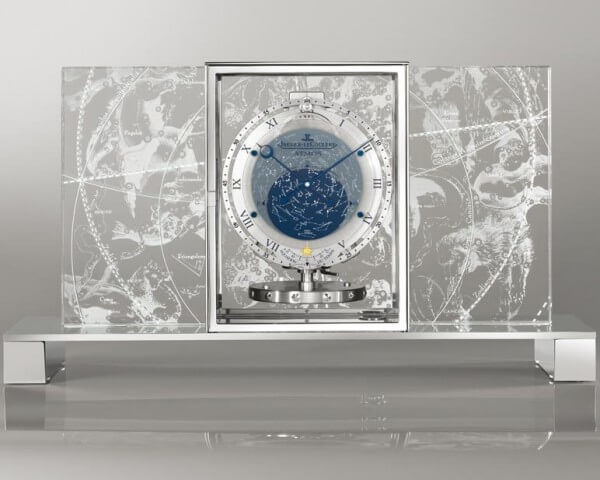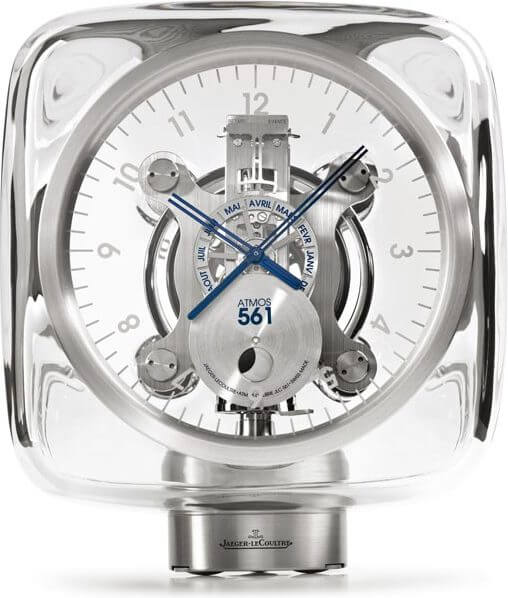Sometimes, one event can lead to another and suddenly a future trend is born. Take clocks, for example. There was a time when no self-respecting home would be without an imposing grandfather clock in the corner of the sitting room, or an ornamental clock set daintily on the mantelpiece. But time has not always been kind to its faithful keeper and clocks, become that little bit has-been, were pushed aside as manufacturers turned their attention to the increasingly popular wristwatch.
But what’s this? Here we are in 2008 and exhibitors at Baselworld and the SIHH are unveiling magnificent clocks. Such prestigious names as Hermès, de Grisogono, Franck Muller and of course Jaeger-LeCoultre, proud father of the Atmos, refuse clocks’ obsolete status and are proclaiming their passion for this complex and ancient art.
Jérôme Lambert, CEO of the Le Sentier Manufacture which this year celebrates its 175th anniversary, has always held clocks in great esteem. “They are a part of our heritage and a flagship product for our brand in terms of sales. Decades, on, the Atmos is as successful as ever,” he affirms.
An inspired idea
This objet d’art has two outstanding qualities: it is easy to maintain and functions in a quite extraordinary way. Indeed, the Atmos runs without battery, electricity or even winding, thanks to the inspired idea of a certain Jean-Léon Reutter in 1928.
At the tender age of 14, Jean-Léon Reutter spent his time trying to invent a perpetual clock. After graduating as an engineer from the prestigious Zurich Institute of Technology, he developed the principle of a clock that would keep time for centuries without any external intervention. In 1932, Jean-Léon Reutter met David LeCoultre who put all his manufacturing resources into producing this incredible object.
The Atmos was an overnight success. Some 750,000 have been sold to date. It also has outstanding green credentials. “Its mechanism is so environmentally-friendly that it would take 60 million to produce enough energy to light a single 15 watt bulb,” notes Jérôme Lambert.

Ice-cool
With taking care of Mother Nature high on the agenda, who could say better than that? At the grand old age of 80, the Atmos was given the red-carpet treatment at this year’s SIHH. Jaeger-LeCoultre is releasing three totally original models for which it has called upon the talent of leading artists and craftsmen.
The first Atmos is the work of designer Marc Newson. “Marc Newson has always been fascinated by the Atmos. He actually contacted us about creating one,” Jérôme Lambert reveals. The Australian artist, who came to fame with his Orgone stretch lounge chair, has applied contemporary design principles of pure lines and forms to envelop the Atmos 561 by Marc Newson in a Baccarat crystal ice-cube. It took five attempts to obtain this perfectly smooth crystal envelope.
As far removed from contemporary design as it is possible to be, the second original Atmos model travels back to the seventeenth century, when Andreas Cellarius drew his star chart. The Atmos Astronomique reproduces a map of the heavens on a glass case. Its complicated movement includes an equation of time, the month and shows the constellations of the northern hemisphere.
With its third Atmos model, Jaeger-LeCoultre pays tribute to the exceptional art of marquetry. Its case, which automatically slides open, is inlaid with hundreds of pieces of precious wood and gold leaf. Painstakingly assembled, they reproduce the world-famous Portrait of Adele Bloch by Gustav Klimt. A masterpiece of which only ten will be made.













